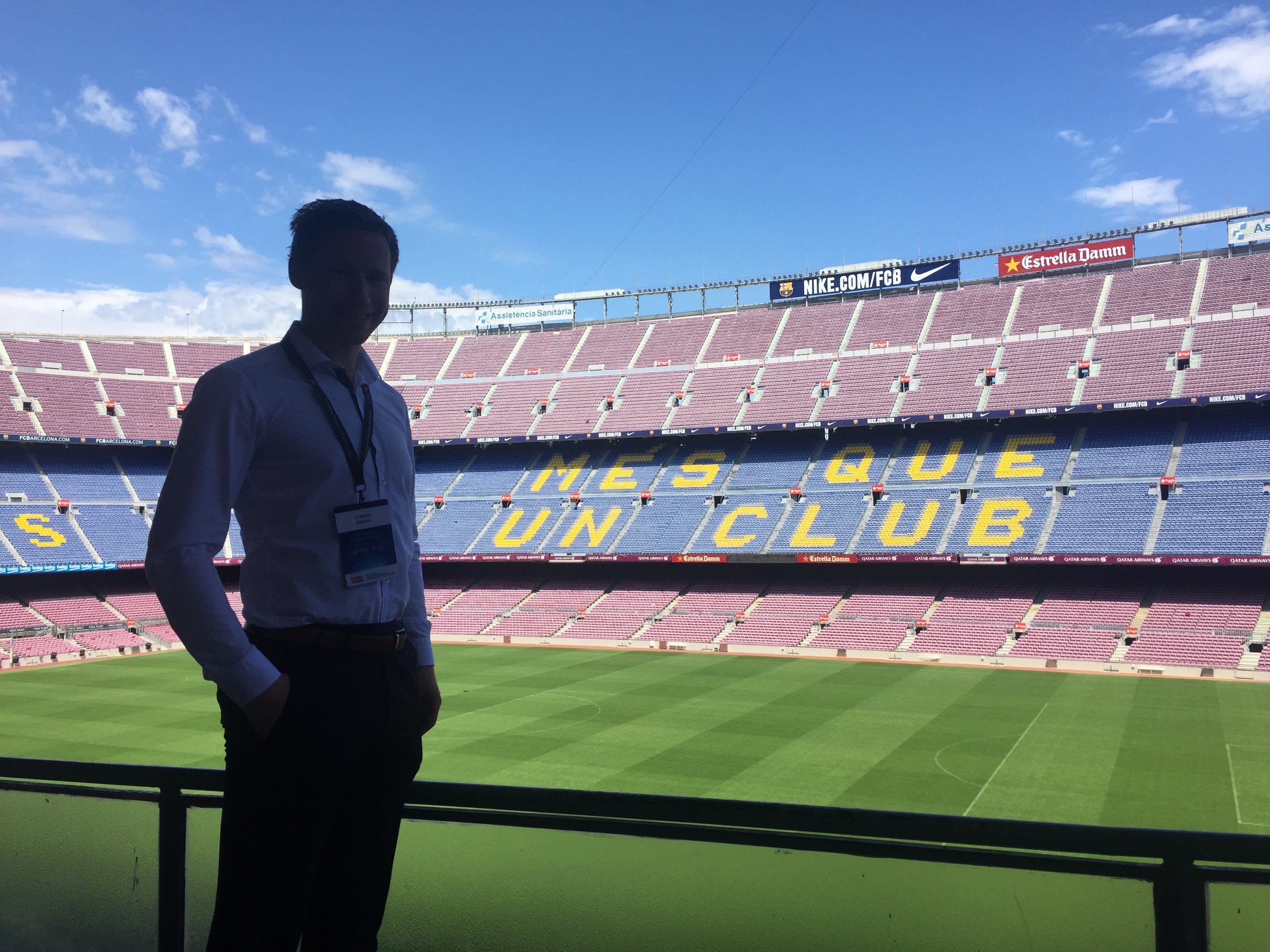Clinic lead Eamon O Reilly recently attended and presented research data at the FootballMed conference in the Nou Camp in Barcelona. The FootballMed conference is the largest FIFA sports medicine conference and is attended by over 5000 delegates from around the world, with most delegates working in professional football.
Eamon was presenting his data on a new return to play test he designed while working in the Sports Surgery clinic. The test which is called the VU test was originally designed to address a gap in return to play testing post hamstring strain. The Vu test was originally born out of an age old question. When is an athlete ready to return to play post injury? Originally the question related specifically to hamstring injury but on researching the question, the literature demonstrates, there was currently no field test that could truly assess all of the specific athletic qualities required to play multi directional field sport.
Recurrence rates in hamstring injuries are quite high, up to 33% and although there are good clinical tests out there, there are limited field based tests. There were agility and change of direction tests that focussed on certain athletic qualities, whether that be cutting, forward and backward running, curved running or an element of straight line sprinting but none that included all of these in the one test.
More specifically related to hamstring injuries, certain key elements were felt extremely important to include in a field test designed to test the athlete as they return to play. Both linear and curved running were deemed important to include in the test to allow different stresses to be placed on the hamstring muscle group. Rapid power production, acclerations and decelerations are often mechanisms of injuries reported by athletes and were therefore deemed important to include in the test.
Photo: Eamon O Reilly presenting research data at Isokinetic Football Medicine 2017.
Many unvalidated methods are reported in hamstring literature as being important as athletes return to sport. High speed running is a common mechanism of injury, and the literature tells us that returning an athlete to high speed running prior to return to team practice should take place
Yet none of the field based agility or COD tests include enough distance to allow athletes to reach this high speed running. This was included in the latter part of the VU test to assess this component of an athletes rehabilitation.
For a wide range of sports such as rugby, american football and gaelic games, the ability to get up from the ground quickly and the ability to reach down to the ground to pick a ball up are important tasks. These types of activites also place stresses on the lower limb (and specifically the hamstring muscle group) that could potentially cause issues and were deemed important to truly stress the hamstring group.
Speaking about the test Eamon explains “I have been using the test for a number of years now with both high level and recreational athletes with good results. The test is extremely tough on the hamstring muscle group due to the varying forces being placed on it and will stress the athlete. However the science and research needs to back this up and that is where the test is at currently. I have just finished data collection on a group of athletes with hamstring injuries where we have looked at the test in relation to other hamstring tests and hopefully I will have results on this in the near future to push onto to publish this research."
Eamon’s former colleagues in the Sports Surgery Clinic have brought the test on one step further and have added technology to the test. They have teamed up with a wearable technology company Turing Sense to gather biomechancial data of athletes undertaking the test. With a large database of biomechancial data already, the Sports Surgery clinic will undertake performance evaluations of athletes undertaking the test using the turing sense technology.
For Eamon, the focus of the test will continue to be as a return to play test and validating this test for implementation in return to play settings is the focus of his research work over the coming year.


